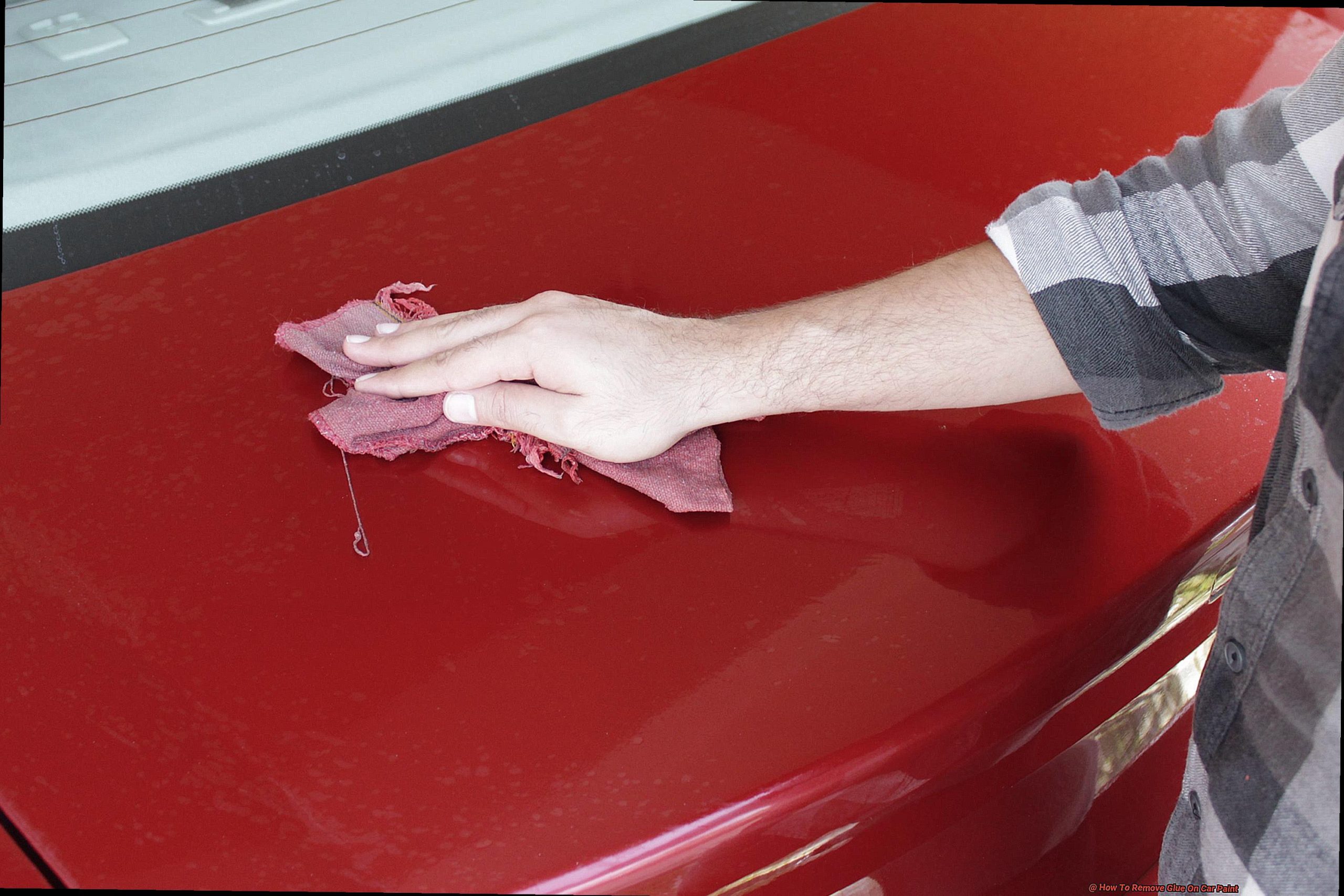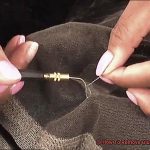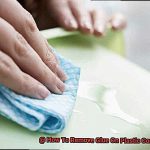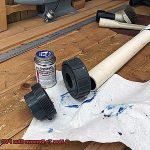Are you frustrated by glue residue on your car paint?
It’s a common issue that can arise from DIY repairs or removing stickers, emblems, or license plates. But don’t worry, there are ways to remove the glue without damaging your vehicle’s appearance.
In this blog post, I’ll be sharing tried and tested tips on how to remove glue from car paint. Whether you’re dealing with stubborn adhesive marks or tiny bits of residue, we’ve got you covered.
Before we dive into the techniques, it’s important to understand some key factors. For instance, the type of paint used on your car will determine the best approach and methods to use.
Additionally, it’s crucial to exercise patience and use the right equipment to avoid harming your car’s finish. So let’s get started.
With these tips in mind, you’ll be able to effectively remove any unwanted glue from your car paint and restore its pristine appearance.
Types of Glue and Extent of Damage
Contents
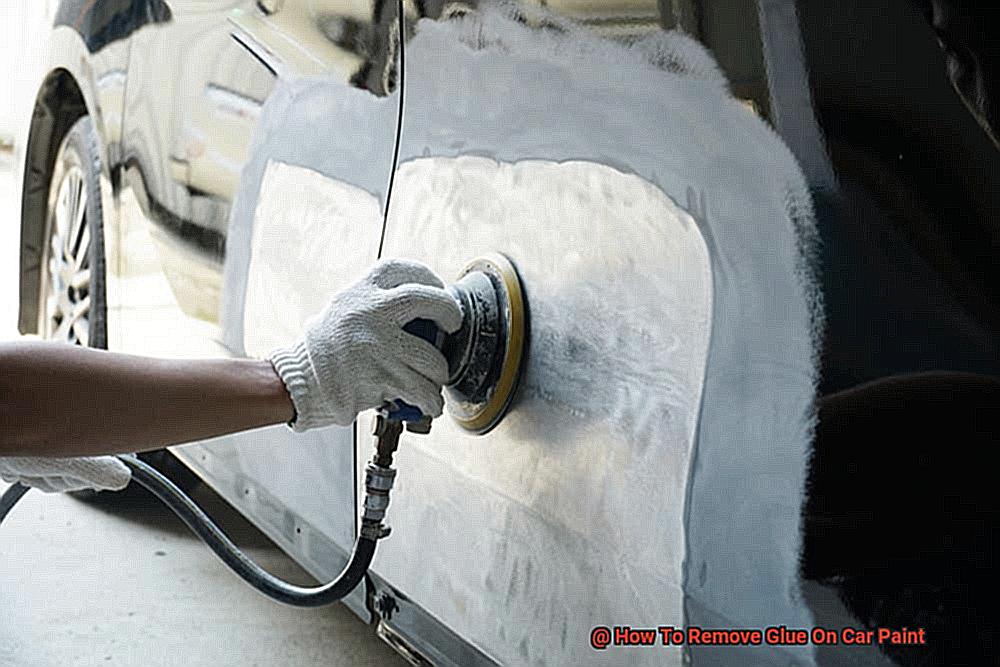
Each one can cause varying degrees of damage to your car’s paint depending on how long it has been left on the surface for.
Stickers and decals are commonly used for decorative or advertising purposes on cars. If they haven’t been sitting on the surface for too long, they are usually easy to remove.
However, if left on for an extended period, they can become challenging to clean and leave behind a stubborn residue that can damage the paint. Vinyl graphics are another type of adhesive often used on vehicles for decorative or advertising purposes.
These graphics are thicker than stickers and can be more difficult to remove without causing damage to the paint. If not removed correctly, they can leave behind a sticky residue that is tricky to remove.
Tape residue is also found on vehicles, often left behind after protective tapes used during manufacturing or transportation are removed. This type of glue can be challenging to remove and can cause damage to the paint if not treated with care.
The extent of damage caused by glue on vehicle paint depends on various factors such as the type of glue used, how long it has been left on the surface, and the quality of the paint. If left for an extended period, glue can penetrate the paint and cause discoloration or even corrosion.
To remove glue from your vehicle’s finish, a common technique is to use a solvent or adhesive remover. Apply a small amount onto a clean cloth or sponge and rub it into the affected area.
Allow the solvent to sit for several minutes and then gently scrub the area with a soft-bristled brush or scraper. If glue residue remains after removing stickers or decals, heat is another cost-effective option.
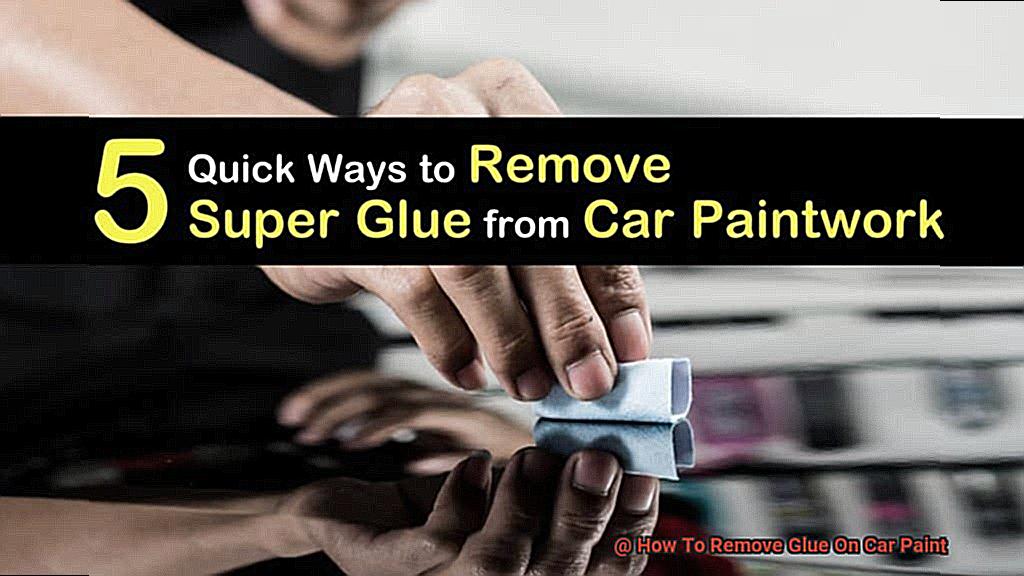
Use a hairdryer or heat gun to warm up the glue until it becomes smooth and pliable. To gently peel the glue residue off the surface, use a plastic scraper or your fingers.
It is crucial to note that these techniques should only be attempted by trained professionals as they can do more harm than good if done incorrectly.
Using Solvent or Adhesive Remover
There’s a solution. Solvent or adhesive removers are the perfect choice for removing stubborn glue without causing any damage.
But before reaching for any old bottle of solvent, it’s crucial to know which products are safe to use on your car’s paint. Rubbing alcohol is a commonly used solvent that is highly effective in removing glue from automotive paint.
Simply soak a cloth in rubbing alcohol and apply it directly to the affected area. Wait for a few minutes before gently rubbing the area with a clean cloth.
If necessary, repeat the process until the glue is completely removed. Another option is acetone, but it needs to be used with caution as it can damage certain types of car paint.
Before applying it to the entire affected area, test a small, inconspicuous area first. If you want to use an adhesive remover, products like Goo Gone or 3M Adhesive Remover are excellent choices.
They are safe for use on automotive surfaces and can be applied directly to the affected area. Allow the remover to sit for a few minutes before wiping away with a clean cloth.
It’s crucial to choose a product specifically designed for automotive use that won’t harm your car’s paint. Always follow the manufacturer’s instructions carefully and use caution when applying the solvent or adhesive remover to your car’s paint.
After removing the glue, it’s recommended to wash and wax the affected area to ensure that the paint remains protected and shiny. In conclusion, removing glue from your car’s paint doesn’t have to be a daunting task.
Choose wisely, follow instructions closely, and protect your car’s beautiful shine with a good wash and wax afterward.
Using Heat to Remove Glue
There is a solution- using heat to remove glue from car paint. But, before you jump into action, let’s go over the correct process to successfully remove glue from vehicle paint using heat.
Start by cleaning the area with soap and water, and make sure it is completely dry. Then, grab a heat gun or hair dryer on a low setting and hold it an inch away from the glue.
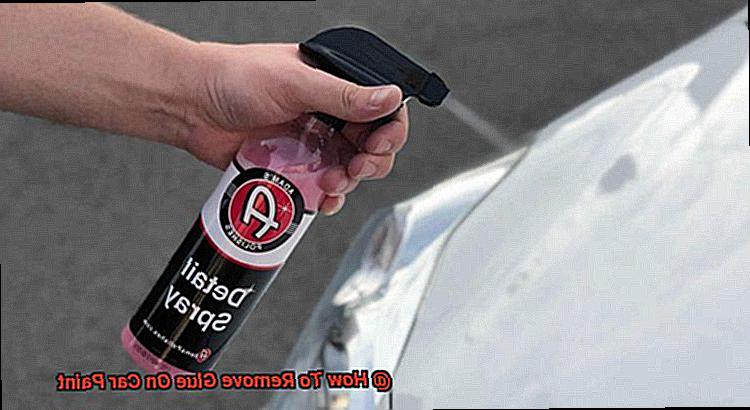
Move the heat source back and forth slowly until the glue begins to soften. But, be cautious.
Avoid overheating the area by not holding the heat source in one spot for too long. This can cause unsightly bubbles or discoloration of the paint.
Take your time and be precise in your movements. Gently lift off the softened glue with a plastic scraper or credit card to prevent scratching or damaging the paint.
If the glue persists, repeat the heating and scraping process until it’s removed entirely. After removing the glue, don’t forget to clean the area again with soap and water and dry it completely.
To sum up, using heat to remove stubborn adhesive from car paint requires patience and precision, but it can yield amazing results when executed correctly.
Advanced Methods for Removing Glue
There are advanced methods for removing glue that can save your beloved car’s paint job.
Heat
Heat is a magical solution for removing glue. Be patient and precise like a surgeon performing surgery. Hold the heat source a few inches away from the affected area and move it around until the glue melts, then wipe it off with a clean cloth.
A Clay Bar
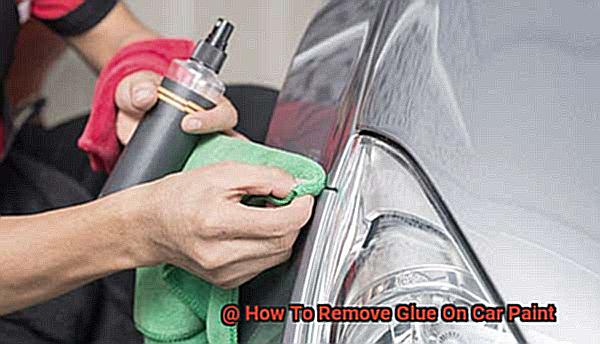
Another advanced method is using a clay bar. This special detailing clay is like a superhero that can remove contaminants from the surface of your car’s paint without causing any damage.
To use a clay bar, lubricate the affected area with detailing spray or soapy water.
Then, gently rub the clay bar over the glue residue until it lifts off. Finally, wipe the area clean with a microfiber towel.

You’ll be amazed at how easy it is to use and how effective it is in removing glue residue. For more severe cases of glue residue on your car’s paint, you may need to use a solvent-based adhesive remover.
These powerful products are specifically designed to break down adhesive bonds and dissolve them, making them easier to wipe away. However, be sure to choose a product that is safe for use on automotive paint and follow the instructions carefully to prevent any damage.
MnM_Akq0Hvs” >
Tips for Removing Glue from Car Paint
Removing glue from your vehicle’s paint can be a daunting task, but don’t worry.
With these tips, you’ll be able to have your car looking as good as new in no time.
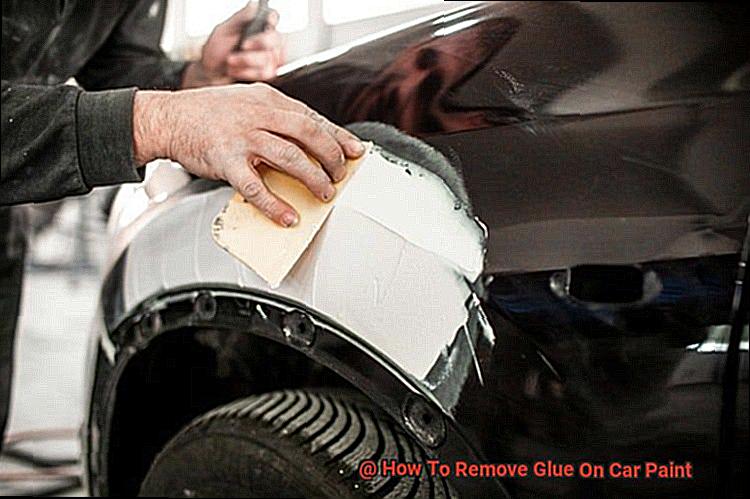
Use Boiling Water
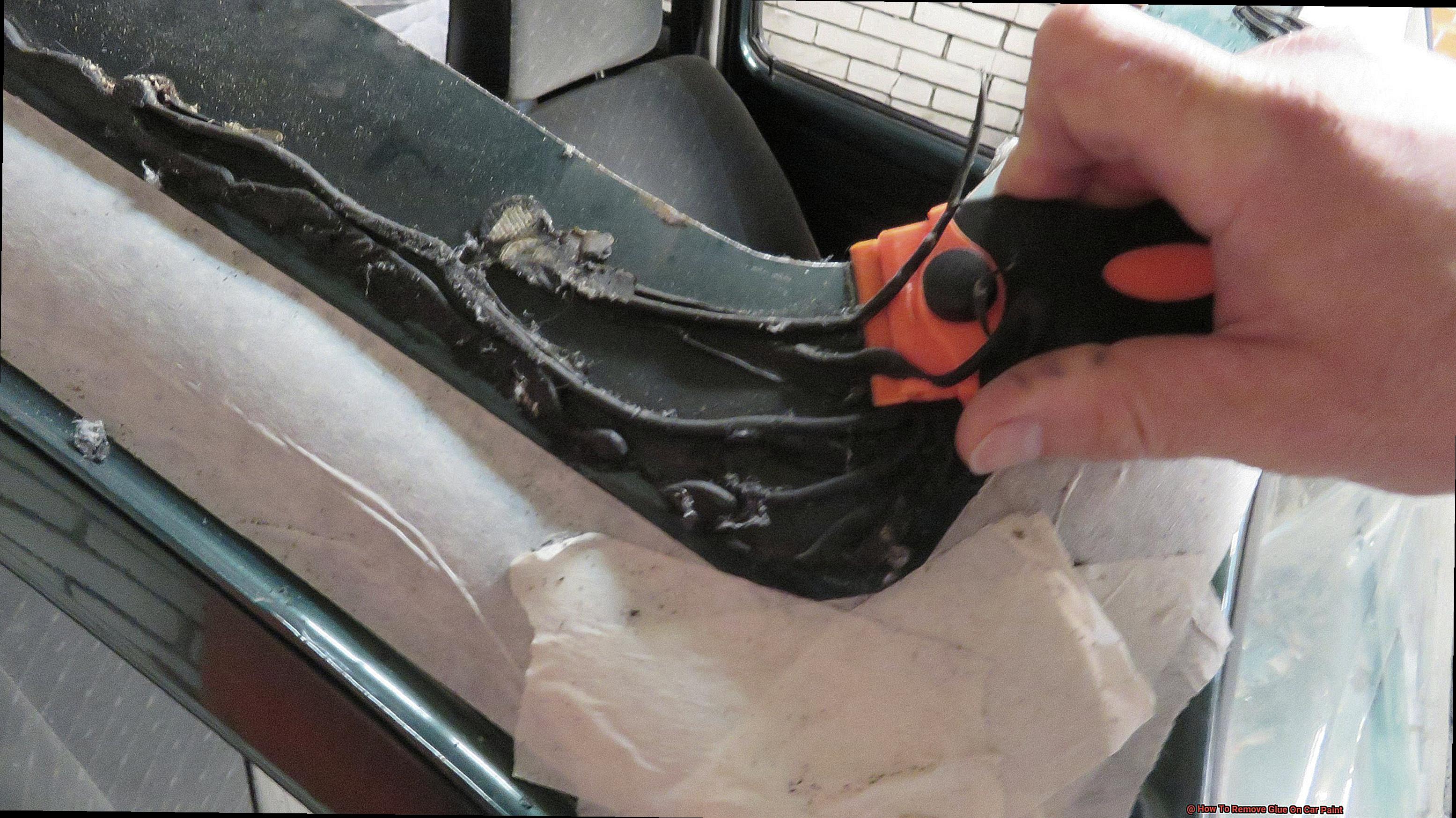
The first tip is to try using boiling water. Pour some hot water on the affected area and let it sit for a few minutes to soften the glue. Then, gently rub the glue off the surface. The heat will help loosen the glue, and it will come right off.
Use Rubbing Alcohol or Vinegar
If boiling water doesn’t work, try using rubbing alcohol or vinegar. Both of these household items are great natural solvents and will dissolve the glue without damaging your car’s paint job. Simply apply some to a damp cloth and gently rub until the glue comes off.
Use a Commercial Adhesive Remover
For more challenging jobs, you may need to use a commercial adhesive remover. These products are specifically designed for use on car paint and can be found at most auto repair stores. Always follow the instructions closely and perform a small patch test before applying it to the entire affected area.
Use a Plastic Scraper
If there is any remaining residue after using one of the above methods, use a plastic scraper to gently clean it off. Be sure not to scratch the paintwork; think of it as playing Operation.
Wash and Dry Your Car
Lastly, after removing the glue, it’s essential to give your car a good wash and dry. This will help prevent any remaining residue from causing further damage or discoloration to your paint job.
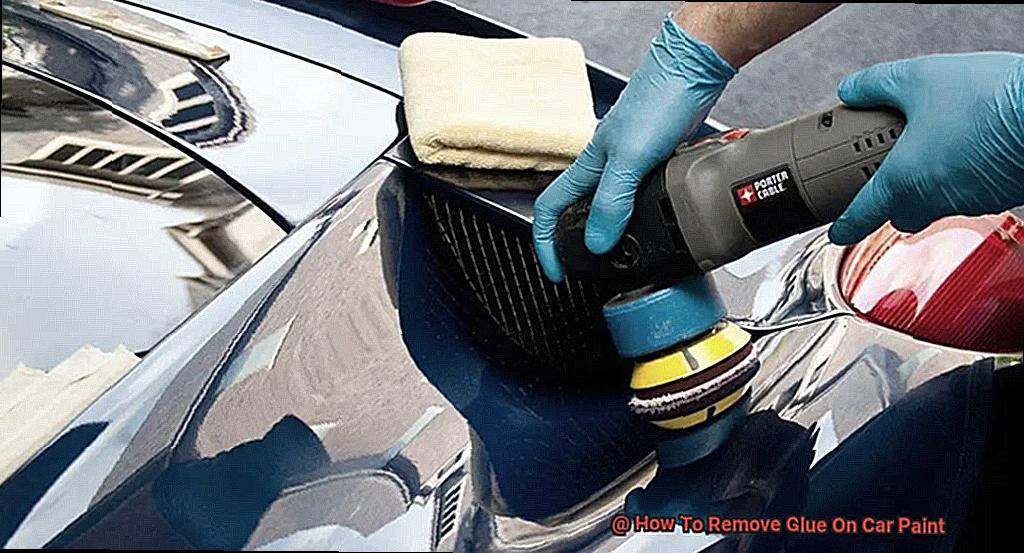
Remember to take your time, and focus on small areas to avoid causing any harm or discoloration.
Also Read: How Much Weight Can Hot Glue Hold?
Conclusion
Removing glue from your car’s paint can be a daunting task, but don’t worry – there are ways to do it without causing any damage.
Whether you’re dealing with stubborn adhesive marks or small pieces of residue, there are tried and tested methods for removing glue that won’t harm your vehicle’s appearance. Before attempting any method, it’s crucial to consider factors such as the type of paint used on your car and the extent of damage caused by the glue.
To avoid damaging your car’s finish, patience is key, along with using the right equipment.
One effective method is to use a solvent or adhesive remover.
Rubbing alcohol and acetone are two common solvents that work wonders at removing glue from automotive paint. Alternatively, products like Goo Gone or 3M Adhesive Remover are great options for hair removal.
Heat is another cost-effective solution. A hairdryer or heat gun will warm up the glue until it becomes smooth and pliable, allowing you to peel it off with a plastic scraper or even your fingers.
For more severe cases of glue residue on your vehicle’s paint, advanced techniques such as using a clay bar or solvent-based adhesive remover may be necessary. Remember to always follow instructions closely and perform a small patch test before applying any technique to the entire affected area.
Once the glue is removed, wash and wax the area for a clean and shiny finish.

